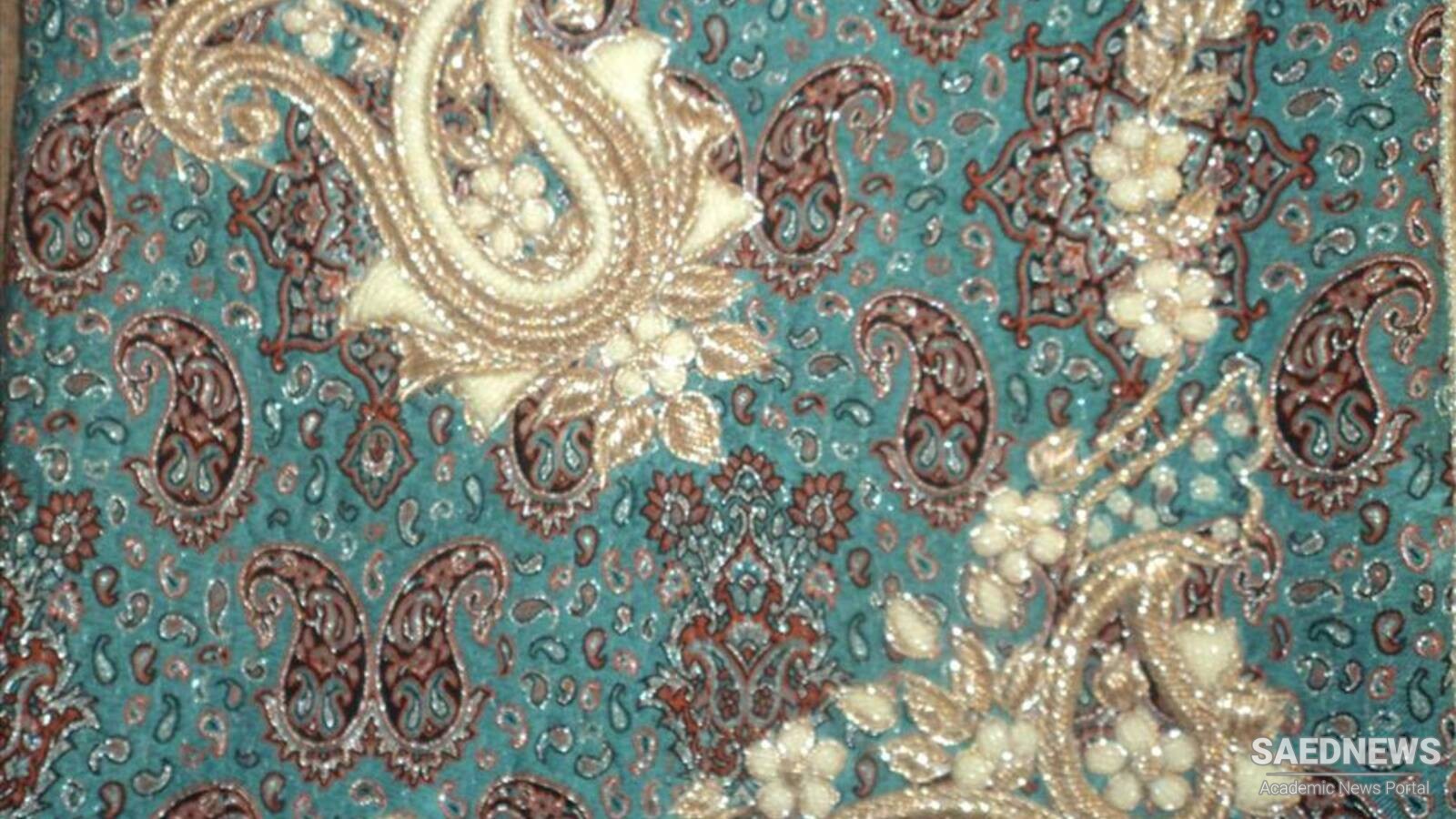Although some believe that the origin of Termeh is the heart of Central Asia and Kashmir highlands, some other believe that weaving Termeh has originated in Iran and then found its way to Kashmir. However, weaving Termeh was developed and became popular in the early Safavid period in Isfahan, and its excelling evolution took place in the reign of Shah Abbas Safavid and became one of the Iranian exportable products.
Taste and initiative of Iranians in the weaving delicacy, material and fantastic schemes of this handicraft is unique; therefore, one of the important duties and barriers of the weaver of Termeh is on choosing and matching the colors as this matching is done whether by choosing harmonious colors or even by choosing contrasting colors in a particular form which can represent kind of congruity and beauty and it is considered as a secret in the Iranian style of weaving Termeh.
In general, the colors for weaving Termeh, and especially colors used for its texts, consist of natural herbal colors as well as natural materials in colors like dark red, light red, green, orange, and black; and, the patterns generally include various traditional curved patterns and schemes.
This delicate and fine cloth had been used for different occasions such as sewing aristocratic and noble clothes, curtains, prayer rugs and robe, and were worn mainly by people from noble, aristocratic and monarchal classes, in the past times; however, in the present time, most of the upper- and middle-class people offer it to each other as gifts in weddings, eves, and official or family occasions, and is sometimes used as furniture cloth or table cloth.
Nowadays, Termeh craft which is on the edge of extinction is only woven in the Yazd Province and sold in the other provinces.


 Rashti Duzi of Gilan
Rashti Duzi of Gilan














































